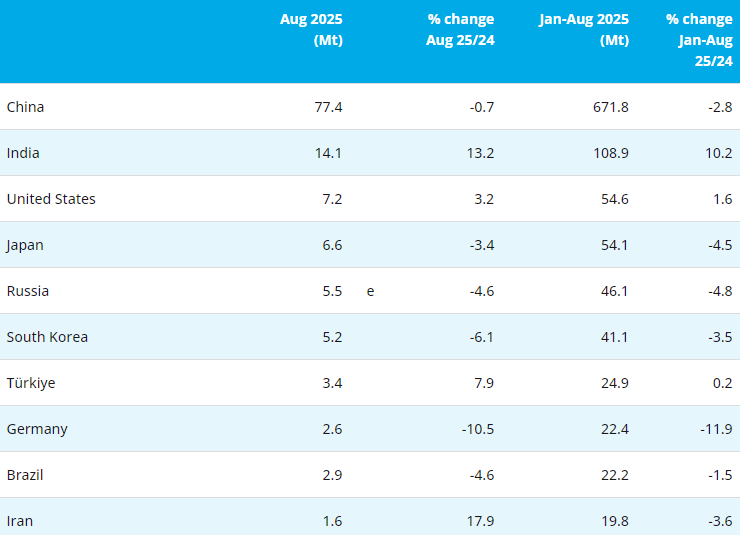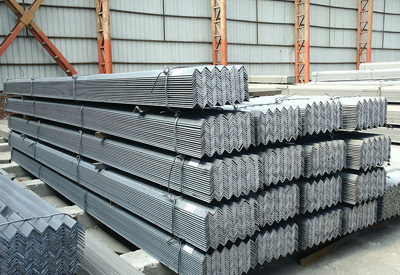[ferro-alloys.com]MINING.COM’s ranking of the world’s 50 largest mining companies based on market value shows an industry clawing back most of the covid-19 related losses by the end of the second quarter.
The Top 50 most valuable mining companies added $249.5 billion in market capitalization over the three months to end June, thanks to surging gold and silver prices, iron ore prices in triple digits, and a late recovery in the copper market.
Mining’s majors looked poised to join the trillion dollar club at the beginning of the year but the pandemic torpedoed the early stages of a cyclical upswing for the industry at the end of last year.
The MINING.COM TOP 50 had a combined market value of $957 billion at the end of June, still more than $30 billion below this year’s opening levels.
Not surprisingly, precious metals companies stormed the rankings during the first half of 2020 with primary gold producers in the ranking adding $70 billion in market value this year.
Newmont and Barrick now look entrenched in the top five as diversified giants Glencore and Anglo American’s bad runs continue.
The integrated Swiss trader and mining giant now sits at no. 10 after a 34% year-to-date market value drop in USD terms – three years ago it’s top 3 spot seemed secure. London-listed Anglo falls 3 spaces to no. 9 with its market cap decline compounded by a depreciating pound sterling.
Another prominent European name, Polish copper company KGHM, is edged out to no. 51 by 2020 gold newcomers, B2Gold, Yamana and Evolution Mining.
Fertilizer companies are having a tough 2020, as potash producer Nutrien leaves the top 10 and Mosaic just holds on at no. 49 thanks to a 44% and 33% market value plunge.
Israel Chemicals drops out of the ranking altogether, thinning out the sector’s presence further, following the delisting of Uralkali last year.
With the worst of the price falls of the battery raw material behind it, top lithium producer SQM manages to climb the ranking while a Q2 rally in the shares of Tianqi sees the Chinese company hold onto the final spot after making it as high as no. 32 three years ago.
Another former Chinese battery metals highflyer – China Molybdenum – is down five positions this year to no. 33 after briefly cracking the top 10 at the end of 2017.
The world’s largest uranium producers – Cameco and Kazatomprom – once again fail to make the top 50 despite the long-awaited rally in the nuclear fuel.
As with any ranking, criteria for inclusion are contentious issues. We decided to exclude unlisted and state-owned enterprises at the outset due to a lack of information. That, of course, excludes giants like Chile’s Codelco, Uzbekistan’s Navoi Mining, which owns the world’s largest gold mine, Eurochem, a major potash firm, trader Trafigura, top uranium producer Kazatomprom and numerous entities in China and developing countries around the world.
Another central criterion was the depth of involvement in the industry before an enterprise can rightfully be called a mining company.
For instance, should smelter companies or commodity traders that own minority stakes in mining assets be included, especially if these investments have no operational component or not even warrant a seat on the board?
This is a common structure in Asia and excluding these types of companies removed well-known names like Japan’s Marubeni and Mitsui, Korea Zinc and Chile’s Copec. Levels of operational involvement and size of shareholding was another central consideration. Do streaming and royalty companies that receive metals from mining operations without shareholding qualify or are they just specialized financing vehicles? We included Franco Nevada, Royal Gold and Wheaton Precious Metals.
What about diversified companies such as BHP or Teck with substantial oil and gas assets? Or oil sands companies that use conventional mining methods to extract bitumen for that matter? Vertically integrated concerns like Alcoa and energy companies such as Shenhua Energy where power, ports and railways make up a large portion of revenues pose a problem as does diversified companies such as Anglo American with separately listed majority-owned subsidiaries. We’ve included Angloplat in the ranking as well as Kumba Iron Ore.
Chemical companies are also problematic – should Albemarle not be ranked because its potash and lithium operations are such a small part of its overall revenues? The same issue applied to FMC before it spun off its lithium business.
Many steelmakers own and often operate iron ore and other metal mines, but in the interest of balance and diversity we excluded the steel industry, and with that many companies that have substantial mining assets including giants like ArcelorMittal, Magnitogorsk, Ternium, Baosteel and many others.
Head office refers to operational headquarters wherever applicable, for example BHP and Rio Tinto are shown as Melbourne, Australia but Antofagasta is the exception that proves the rule. We consider the company’s HQ to be in London, where it has been listed since the late 1800s.
Trading data from primary listing exchange and currency cross-rates at the date of publication. Market capitalization calculated at primary exchange, where applicable from total share outstanding, not only free-floating shares.
(Mining.com)
- [Editor:王可]



 Save
Save Print
Print Daily News
Daily News Research
Research Magazine
Magazine Company Database
Company Database Customized Database
Customized Database Conferences
Conferences Advertisement
Advertisement Trade
Trade














 Online inquiry
Online inquiry Contact
Contact

Tell Us What You Think